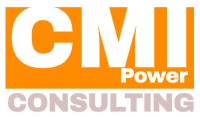EFFICIENCY COMMUNICATION WITHIN AND BETWEEN DEPARTMENTS/TEAMS.
Shop Floor Management
Customer needs
Business +60M euro yearly turnover
The operational project was requested by an automotive company with 60+ millions of euros yearly turnover, due to delayed reactions to various issues, impacting the company’s performance in terms of delivery, quality, motivation, and ultimately profit. However, the company’s inability to address issues promptly led to disruptions in the supply chain and delayed shipments, resulting in customer dissatisfaction and potential financial penalties.
The objectives of the project were to improv response times, enhancing operational efficiency, and fostering a proactive culture, the project aimed to restore delivery schedules, uphold quality standards, boost employee morale, and ultimately drive profitability in the highly competitive automotive market.
Implementation
After CMI evaluation, it was proposed and accepted by the client to implement a well-defined structure for meetings within the organization. This included defining meeting standards and providing training for staff on how to lead and participate effectively in meetings.
The structured approach to meetings aimed to streamline communication, enhance collaboration, and improve decision-making processes within the organization. By establishing clear meeting objectives, agendas, roles, and expectations, the organization sought to ensure that meetings were purposeful, productive, and conducive to achieving desired outcomes.
Additionally, training sessions were conducted to equip staff with the necessary skills and techniques for leading and participating in meetings effectively. This included communication skills, active listening, conflict resolution, and facilitation techniques to ensure that meetings were conducted efficiently and that all voices were heard.
Overall, the implementation of a well-defined meeting structure and standards, coupled with staff training, aimed to foster a culture of transparency, accountability, and continuous improvement within the organization. By optimizing the way meetings were conducted, the organization aimed to drive greater efficiency, alignment, and success in achieving its strategic objectives.
Outcomes
Regular meetings organized by area/department leaders are management methods through which they successfully oversee processes within their responsibility and implicitly manage team members. To ensure a level of collaboration and teamwork, team members need to meet, communicate, and be trained towards common goals. This meeting organization concept ensures excellent communication and a focus on key elements and actions within the organization, ensuring correct prioritization of teams and a focus on results.
